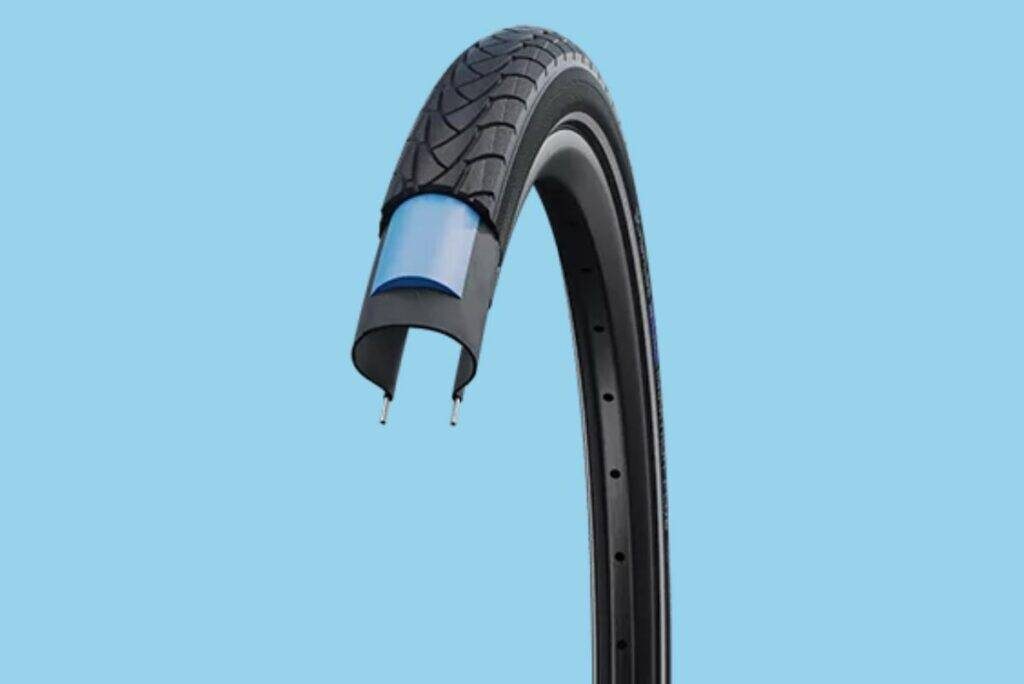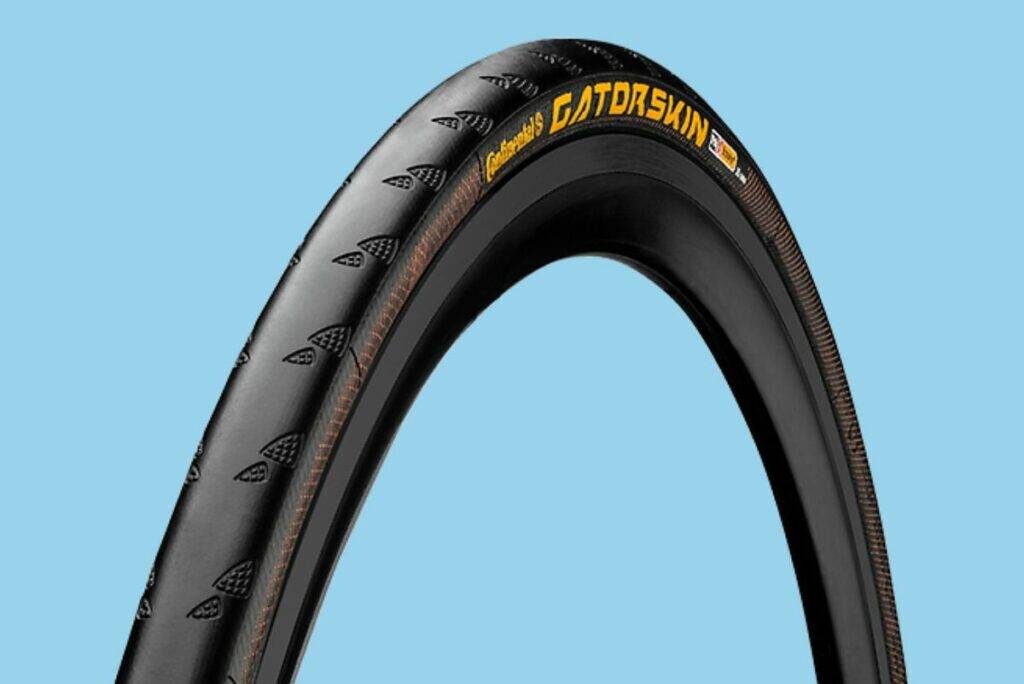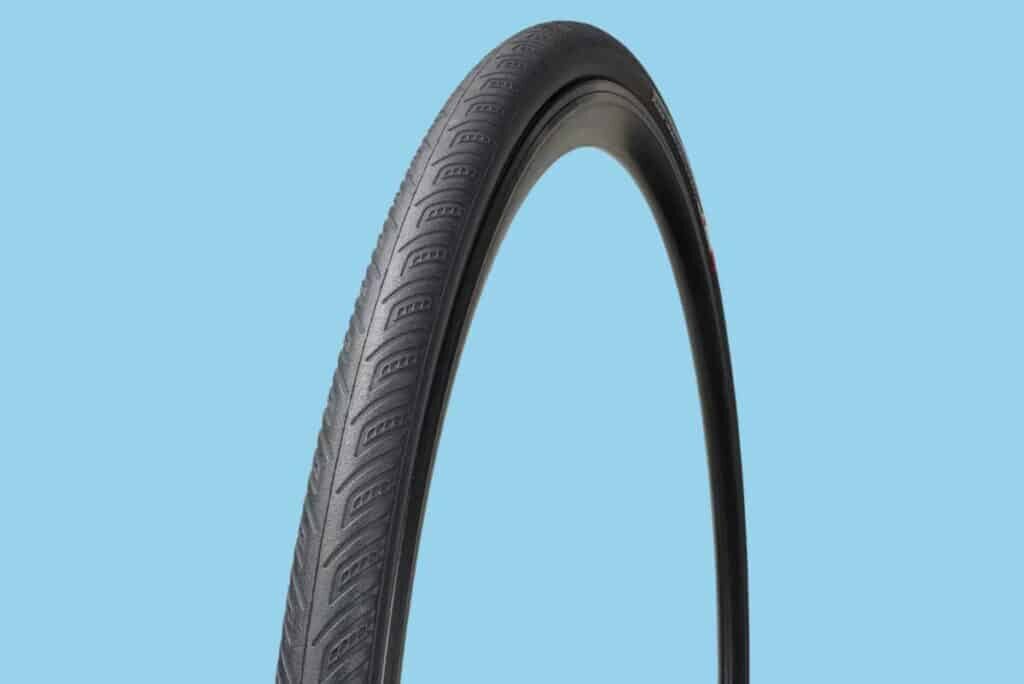A saucepan, a garden spade or a backpack. Three utilitarian items that, when well designed, perform their job without even so much as a modicum of fuss. So well in fact that you may never notice their intricacies or foibles.
Bike tires (or tyres) can and will fit into this narrative, barring one chin-scratching, angst-inducing event – a puncture. Punctures can, at best, ruin a glorious sunny ride or make you late for work. At worst, a punctured bike tire can quickly render a bike dangerous to ride.
For most cyclists, including us here at Discerning Cyclist, a riding life is never truly puncture-free. But, with a little bit of care and attention, some steps can be taken to reduce the occurrence of this downright annoying event. Fitting a pair of puncture-proof tires is perhaps the quickest and easiest way to help prevent a puncture.
Why Do Bike Tires Get Punctures?
Today, all bicycles are equipped with pneumatic bike tires – essentially a fancy way to describe a rubber tire (with or without a separate inner tube) inflated with air. The air inside the tire helps it roll when in contact with the ground.
A puncture happens when the air inside the tire (or tube inside) escapes, causing a deflating feeling for the rider and the tire. Punctures can happen for several reasons.
A sharp object piercing through the tyre is the most common cause of a punctured bike tire. Items like glass, thorns or nails are sharp enough to enter through the rubber casing of the tire, allowing air to quickly escape around the hole that it created.
When changing a punctured tire yourself, be sure to check if the small items that caused the puncture have been removed. Often, they remained lodged in the tyre. You don’t want to start riding again only to find that the original culprit has caused another puncture!
The second cause of a puncture is what’s commonly known as a pinch flat. This only occurs in tyres with an inner tube. It occurs when the inner tube is squeezed against the wheel. Most pinch flats can be identified by a ‘snake bite’ pattern in the inner tube – that is two thin holes adjacent to one another. By choosing to ride tubeless tires you virtually eliminate this type of puncture.
There are other, less common, reasons for a tyre to get punctured. Sometimes a tyre can be so worn that the inner tube is quickly exposed to the surface upon riding. In some instances, the tyre can be incorrectly seated on the wheel, causing the inner tube to be exposed. Bikes with incorrectly set up rim brakes can also rub the tyre causing it to rupture and lose air.
Do Puncture Proof Bike Tires Exist?
We hate to say it, but no bike tire is 100% puncture-proof. However, several features are added to tires to eliminate the most common types of punctures.
The most popular method is to add an extra layer between the tread (the rubber outside of the tire) and the casing (the inside of the tyre that forms its shape). Some are extra thick to prevent objects which penetrate the tire from reaching the inner tube. Others are extra tough.
Another trick used by tyre manufacturers is to use either a special blend of rubber tread or a tread with extra thickness. Like the puncture protection layer we detailed above, the aim here is to provide an extra barrier against sharp objects.
There’s a third attribute in the fight against punctures – the tire casing. Whilst most foreign objects enter the tire via the tread some can find their way in through the sidewall casing – that’s the sides when the tires are mounted on the wheel. Protecting and strengthening the sidewall casing gives the tire support and prevents tyre wear at what is a delicate part of the tire.
Puncture Proof Tires [PROS + CONS]
Before digesting the pros and cons of puncture-proof tires, take a moment to think about the bike rides you most frequently do and the reasons for those rides.
| PROS | CONS |
|---|---|
| Safe and reliable | Lower rolling resistance |
| Might end up cheaper in the long run | Heavier than standard tires |
| Puncture protection adds to the price | |
| Can be a pain to fit |
Are Puncture Resistant Tires Worth It?
In the opinion of the author puncture-resistant tires are worth the investment, for almost everyone. From those riding a folding bike to the train station to those taking their hybrid down to the shops, anything to prevent the dreaded hiss of escaping air is worth it in our book.
If the increased weight and rolling resistance are too much of a cross to bear, then other solutions like tubeless tyres or solid tyre inserts might be more your cup of tea.
3 Bike Tires That Don’t Puncture
Plenty of tyres these days feature some element of puncture protection so let’s look at 3 of our favourites.

1. Schwalbe Marathon Plus
First up on our list is a tire with a solid reputation in the cycling community. The Schwalbe Marathon Plus is trusted by everyone from daily commuters to cyclists who want to ride around the world – Schwalbe themselves say it’s their best-selling model.
If you see one in your local bike shop and you’ll be surprised at its thickness and how sturdy the tire is. It features a 5mm layer of puncture protection – this is more than the 3mm layer in the standard Marathon tire. Pleasingly that layer is now composed of recycled materials.
The great thing about the Marathon Plus is that it should fit your bike. We counted 18 different sizes on the Schwalbe website from the dinky 16” wheels of a Brompton right up to a chunky 1 ½ inch tire for a 28” (700c) wheel.

2. Continental Gatorksin
Continental’s Gatorskin is a popular option for those looking for a puncture-resistant bike tire. The tire features a PolyXBreaker – a rather fancy name for a layer of puncture protection. There’s also a ‘Duraskin’ a prevention layer that surrounds the entire casing of the tyre to protect it from cuts and abrasions. Look closely and you can see the criss-cross pattern right across the sidewall of the tire.
At our count, there are 11 different varieties of the Gatorksin available. In the most popular sizes like the 700x25c and 700x28c (typical road bike tire sizes), both folding and rigid bead options are available. Folding tires make them easier to carry, but they’re also more expensive than rigid tires.
Gatorskins are also relatively lightweight and have good rolling resistance for a tire with some element of puncture protection.

3. Specialized All Condition Armadillo Elite
Bike manufacturer Specialized also make a whole host of accessories and components. Their All Condition Armadillo Elite tyre is best suited for road and some hybrid bikes. Reviewers praise the tyre for its ability to provide grip, reduced rolling resistance and of course an element of puncture protection. The Armadillo Elite is available in a small number of sizes. There is however a standard version of the Armadillo which has a greater breadth of sizes, although it isn’t available with the faster rolling rubber compound of the Elite version.
The post Bike Tires That Don’t Puncture [3 Puncture-Proof Tires] appeared first on Discerning Cyclist.
![Bike Tires That Don’t Puncture [3 Puncture-Proof Tires]](https://bicycle.org/wp-content/uploads/2023/01/schwalbe-puncture-proof-tire-1024x684-1-760x508.jpg)